
This, say Exped, is the world's lightest mat at these temperature and comfort levels. While it's always wise to take absolute claims with a pinch of salt, it is fair to say that the SynMat HyperLite manages to pull off a pretty difficult trick: it is warm and comfy, while at the same time impressively lightweight and very compact. If you're a minimalist camper or backpacker who wants to shed as much weight as possible without sacrificing a good night's sleep, this must be one of the best options currently available. Only a real winter cold snap would be likely to test it beyond its limits.
"You'll find warmer inflatable mats and you'll find lighter... but both at once? Unlikely"
Weight and pack size
At 355g on my kitchen scales (Exped say 350g), the SynMat HyperLite really lives up to its name. I have never before used an inflatable mat as light as this one, and I suspect even committed minimalist backpackers would be impressed. Even with a stripped-back summer load this mat makes little extra impact on your overall pack weight, particularly bearing in mind that its integral insulation will help you get away with a lighter sleeping bag than you otherwise might.
Rolled into its stuff sack the mat makes a little bundle barely 20cm in length, squeezing unobtrusively into the smallest overnight pack. I have pockets on waterproof shells roomy enough to fit it. If their compact packed size is among the key benefits of inflatable mats versus a more traditional foam rollmat, then the SynMat HyperLite takes this advantage and really runs with it.
Lightweight materials in part account for the low weight - 20 denier fabric has been used throughout, for instance - but more significant I suspect is its narrow, tapered shape. Put simply, there is less mat for your money (but in a good way). After all, if you are carrying your home for the night on your back, why bring more mat than you absolutely need?
Inflation and deflation
Have you got a strong set of lungs? The mat is not remotely self-inflating, and needs you to fill it either by mouth power or by means of a pump. Let's say right away that Exped strongly advise users not to inflate any of their mats by mouth, as it introduces moisture that can turn things mouldy. Be that as it may, in the real world I have to admit to doing just that on occasion. Blowing it up manually (orally?) doesn't take long - a couple of minutes at most - but can leave you a little light headed if you don't pause to compose yourself halfway through. Both inflation and deflation are achieved via the one dual-purpose valve, a durable low-profile design that is satisfyingly simple to use. To inflate the mat, just blow; you can remove your mouth at any time and the valve won't let the air out. Alternatively, do it properly, save your breath and your mat, and buy a 'Mini Pump' or 'Schnozzel Pumpbag' (available separately, and it needs to be one of these two very lightweight Exped designs in order to fit the valve). If you do follow the official line and sensibly opt for one of the Exped pumps then it is worth pointing out that you're effectively ending up with a mat that's about 50g heavier and £15-£30 more expensive than the headline figures.
When it comes to deflating the mat you open the valve simply by sticking in either a finger, or the little rubber toggle that Exped have attached to the lid of the valve; kneel on the mat to apply some pressure, then just keep rolling and squeezing until all the air is out. The toggle works best, as it frees up both your hands for the squeezing.
"Both inflation and deflation are via a single dual-purpose valve"
Warmth and comfort
In the SynMat HyperLite, synthetic insulated filling is laminated to both the upper and lower sides of the mat, which Exped say eliminates the loss of loft common to synthetic filled sleeping bags. It certainly seems effective.
The temperature ratings of products such as mats and sleeping bags are at best a rough guide, and since we all run differently one person's comfortable night's sleep at a given temperature may be another's shivery misery. In an attempt to add some science-based objectivity, manufacturers often quote R-values too. Put simply (the only way I know how) this is a measure of the ability of a piece of insulation to reduce the rate of heat flow in lab conditions, bigger numbers being better. With an R-value of 3.3 the SynMat HyperLite is absolutely on a par with the Sea to Summit UltraLight Insulated Mat that we reviewed in August (see here). This is a pretty respectable score, which for my money puts these inflatable mats into the nearly-four-season (if not barmy cold) category. By way of comparison, the closed cell foam Thermarest Ridgerest has an R-value of 2.8.
All of this makes sense on paper, but what about real world experience? Well, although I have not so far had a chance to push The SynMat HyperLite's stated lower limit of -6, I can say that after several autumn nights camping in near-zero temperatures I have yet to feel even the merest hint of a chill through the mat from the ground below. For nights in less extreme winter weather I would be happy packing this mat; but if anticipating anything below minus two or three I'll probably play it safe with something heavier - Exped's range of down-filled mats for instance (review here).
The generous 7cm depth of the mat's full-length baffles smoothes over the lumps and bumps to make a luxury bed even on fairly uneven ground. This may be lightweight camping, but you're making no compromises on comfort here.
Length is supersized too. Exped seem to model their mats on tall thin people, and though I've been testing the SynMat HyperLite in size Medium (the smallest it goes), at a whopping 183cm in length this is pretty much spot on my 6-foot height. Fine for me, but I can't help feeling they've missed a trick (and a headline lightweight model) here by failing to extend (or rather, contract) the range into the smaller sizes to cater for shorter folk.
At the same time as shorter people might be finding more length here than they strictly need, anyone wider than average may struggle to fit on the standard width Medium that I've had on review. At the shoulder end, the air cells that run along the sides are marginally thicker than the rest, creating a subtly scooped shape that helps stop you rolling off. However it has limits. While it is very long, the standard size Medium is only 52cm wide at the shoulders and 35cm at the feet; with a mat this narrow you don't have to slip far before you find yourself hanging over the edge, and on one night when lying at 90 degrees to a shallow slope I did wake up a couple of times with a cold shoulder. The answer, of course, is either to avoid sleeping across a slope or to take a fairly minor weight and wallet hit by investing in the Medium Wide or Long Wide version, both of which are 65cm at the shoulder.
Durability
In itself this review has been too short term to give definitive conclusions on the toughness of the SynMat HyperLite, which has to date only ever been used in a tent on forgiving grassy ground. That said, its 20-denier polyester fabric is very lightweight, and the honeycomb pattern with which it is stamped fulfils only a cosmetic role rather than offering any rip protection. Exped guarantee this model for two years as opposed to their standard five years, so that should tell you something. As such, I would not expect miracles of its durability. A couple of years ago I reviewed Exped's Downmat UL7, which uses the same weight of fabric. Here's what I said back then:
"When packing up camp one morning I pulled the mat out of my tent and gently laid it, fully inflated, against a dry stone wall. Big mistake. Though it was simply propped against the rock, the next thing I knew a sharp edge had managed to inflict a 2cm tear. Luckily I'd brought the repair kit (included), and several applications of fabric glue and a small patch had the mat good as new - well almost. Perhaps I was unfortunate, or stupid, but I shall be handling this mat with more care in future, and would not dream of laying it out on stony ground again. The light weight clearly comes at a price"
I will be treating the SynMat HyperLite with equal care, but if the worst does happen then the repair kit that Exped include with their inflatable mats is very effective: my two-year-old patch on the Downmat UL7 is still going strong.
Summary
It's well made and comfortably thick, but what really sets the SynMat HyperLite apart is its impressive warmth for its minimal weight. You'll find warmer inflatable mats and you'll find lighter... but both at once? Unlikely. For three season campers and backpackers counting every gram, this superb mat is a tough act to beat, and only really hits its limit when the thermometer drops consistently below zero. The price may seem high, but in fact it's pretty ball-park for a mat of this calibre.
Exped say:
The SynMat Hyperlite is the world's lightest mat at its warmth and comfort levels! It packs to an extremely small size and its tapered profile fits into the smallest tents. Tapered design and 20 denier fabric for weight reduction, microfiber insulation for 3-season warmth and 7cm thickness for comfort. This mat proves that comfort and warmth need not be sacrificed in pursuit of super light packing.
- Temperature: -6 °C
- R-Value: 3.30
- Thickness: 7cm
- Dimensions M: 183cm (length); 52cm (shoulder width); 35cm (foot width) Packed length: 19cm
- Dimensions MW: 183cm (length); 65cm (shoulder width); 42cm (foot width) Packed length: 19cm
- Dimensions LW: 197cm (length); 65cm (shoulder width); 40cm (foot width) Packed length: 20cm
- Weight: M 350g MW 415g LW 445g
- Product contents: Mat, Packsack, Repair kit, instruction sheet, Repair manual
- Warranty: 2 years
- Prices: M £95 MW £105 LW £115
- Extras: Mini Pump £15; Schnozzel Pumpbag Med £25; Schnozzel Pumpbag Large £30; Pillow Pump £25
For more info see exped.com




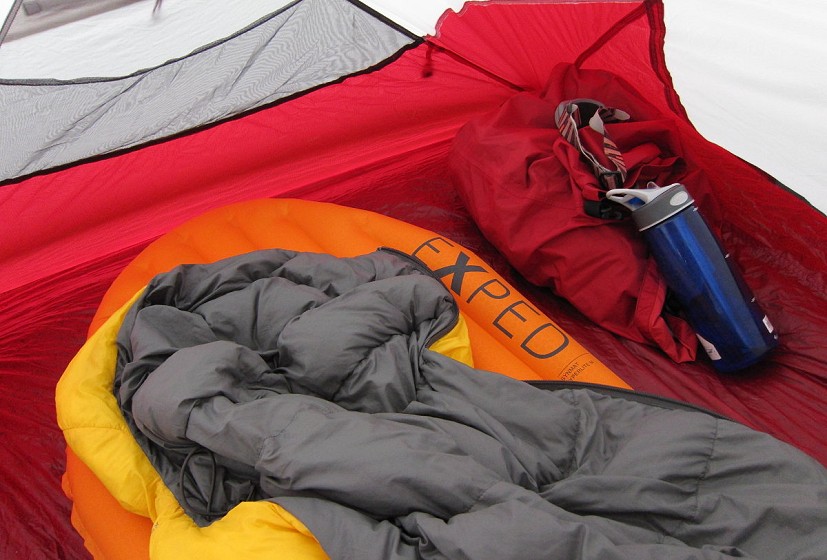
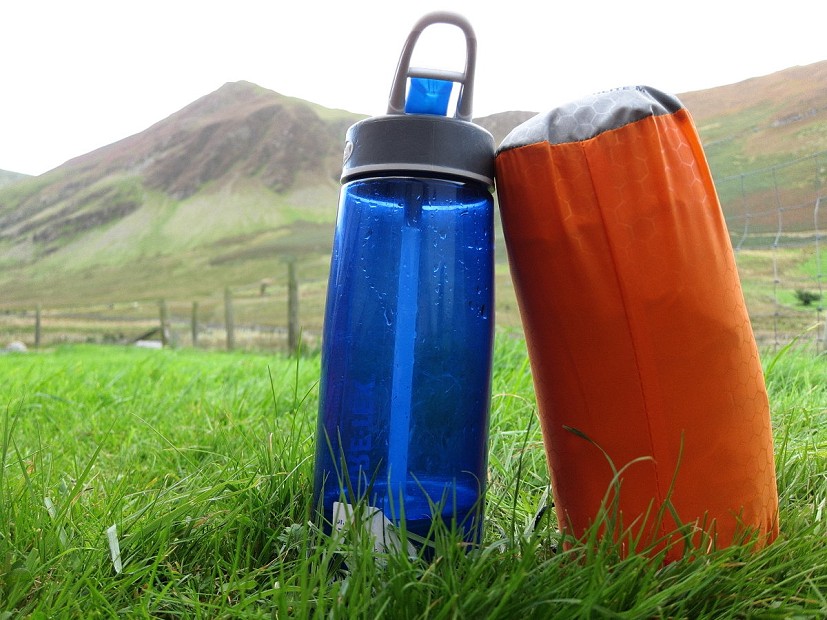
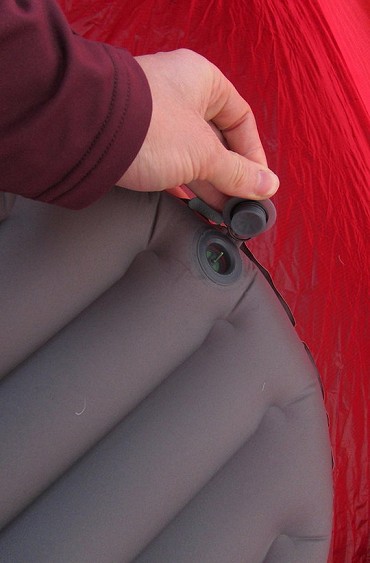

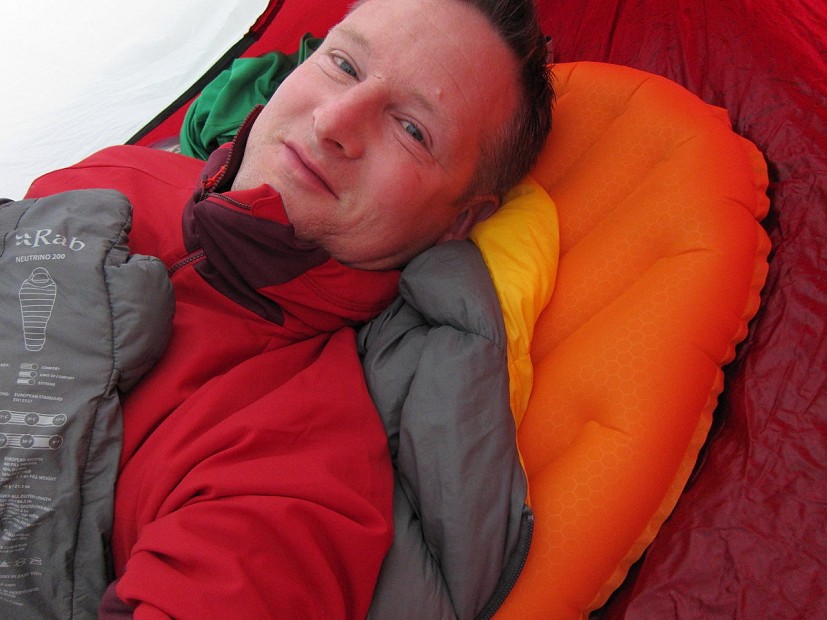
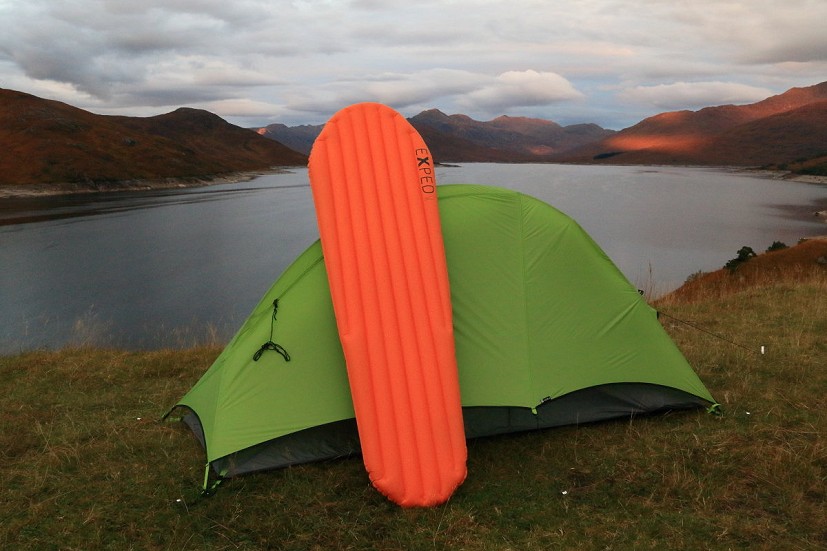
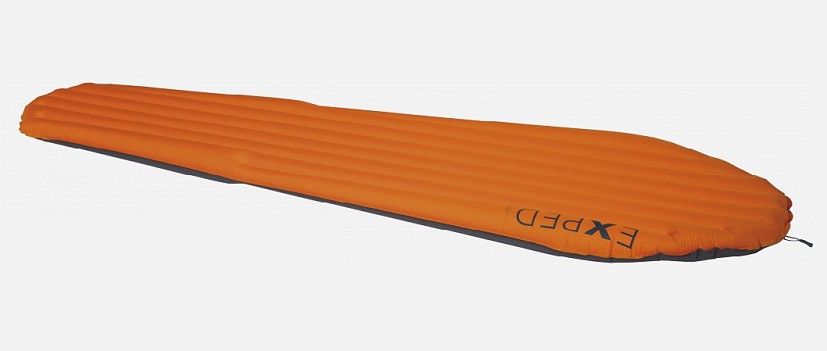

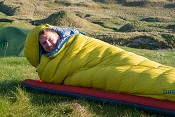
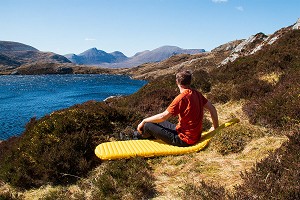








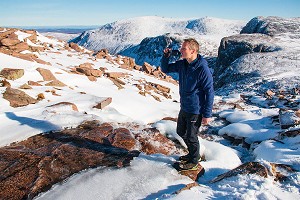

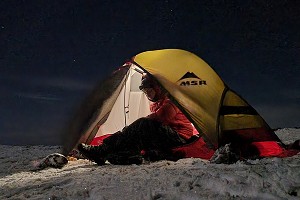
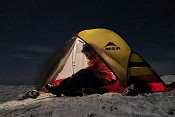
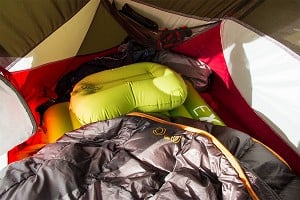
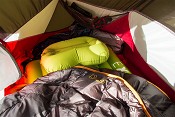
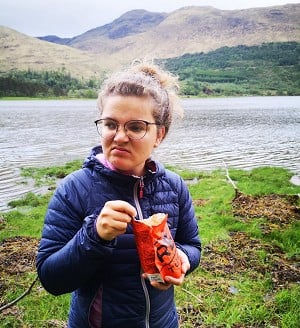

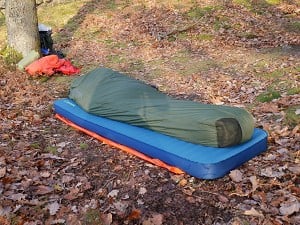
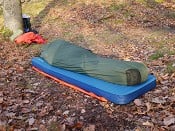














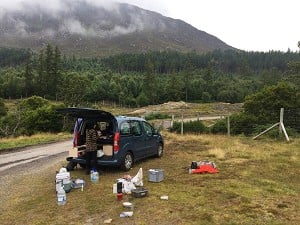



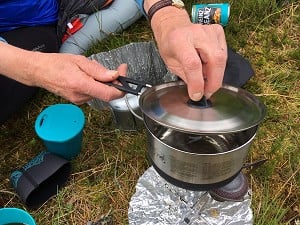
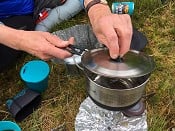
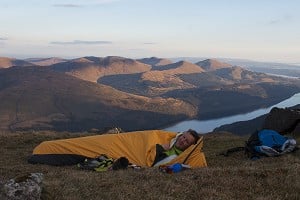





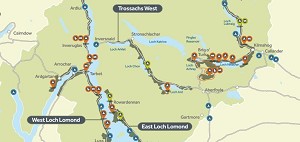





Comments